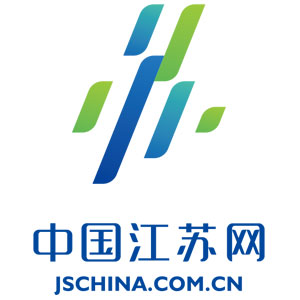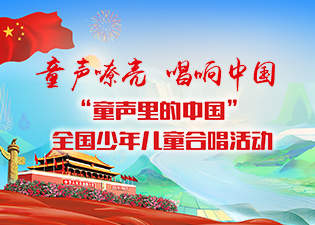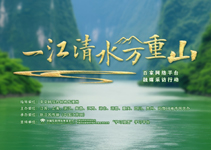有机固体废弃物资源化利用后对农业生产的贡献
The contribution of resource utilization of organic solid waste to agricultural production (2)
南京外国语学校初二(8)班2025年学习小组暑期实践
作者:周淽洋、路子雯、沈钰清、吴翊凡、朱紫涵、赵紫涵(排名不分先后)
英语指导:南京外国语学校初二(8)班 李娜 老师
(2025年08月30日)
2024年暑假,我们学习小组首次参与了该课题的社会实践。通过实践,我们深刻认识到固体废弃物分类的重要性,以及分类后有机固体废弃物的资源化利用对环境优化的积极作用和对农业生产的初步价值。今年(2025年)暑假,我们再次对该课题进行了更为深入的专项调研,聚焦于农业生产应用的领域,并最终形成了这份实践报告。
During the summer vacation of 2024, our study group participated in the social practice on this topic for the first time. Through the practice, we deeply realized the importance of sorting solid waste, as well as the positive effects of resource utilization of sorted organic solid waste on environmental improvement and its preliminary value for agricultural production. During the summer vacation of this year (2025), we conducted a more in-depth special research on the same topic, focusing on its application in agricultural production. Finally, we have put together this practice report.
正文:
1、引言【周淽洋】
Introduction
有机固体废弃物是指含有有机物成分的固态废弃物质。在人类的生活和生产活动中,会产生大量的有机固体废弃物,例如日常生活中的厨余垃圾、园林绿化垃圾等垃圾;农业生产活动中的稻草、麦秆等农作物残留物,养殖场的动物粪便,农产品加工厂产生的谷壳、麸皮、甘蔗渣等废料,以及食品加工过程中产生的废渣废料等。随着人口的增长和人们消费水平的提高,有机固体废弃物的数量巨大且持续增长,若处理不当,将对环境造成严重危害。如何变废为宝,通过科学手段实现其资源化、高值化循环利用,使其成为环保和农业领域的新质生产力,是我们关注的重要课题。
为此,我们学习小组于2025年8月实地考察了砾德农业科技发展(南京)有限公司及江供联创(江宁区汤山街道)生态种植基地,深入开展了对有机固体废弃物资源化利用后形成的液体有机肥在改良土壤、促进化肥减量、减少农业面源污染等方面的研究,并同步进行了提升农产品品质等农业生产领域价值的相关调查与研究。
Organic solid waste refers to solid waste that contains organic components. In human daily life and production activities, a large quantity of organic solid waste is generated, including kitchen waste and landscaping waste in daily life; crop residues (e.g., rice straw and wheat straw) from agricultural production, animal manure from livestock farms, waste materials (such as rice husks, bran, and sugarcane bagasse) from agricultural product processing facilities, and waste residues from food processing. With population growth and rising consumer spending power, the volume of organic solid waste is not only enormous but also continues to increase. If not properly managed, it can cause severe harm to the environment. How to convert waste into resources, achieve its resource recovery and high-value circular utilization through scientific methods, and thus develop it into a new type of productive force in the environmental protection and agricultural sectors, is a key issue we are focusing on.
To this end, our study group conducted a field survey of Lide Agricultural Technology Development (Nanjing) Co., Ltd. and Jianggong Lianchuang (Ecological Planting Base, Tangshan Street, Jiangning District) in August 2025. During the survey, we carried out in-depth research on liquid organic fertilizers—produced through the resource utilization of organic solid waste—focusing on their roles in soil improvement, promoting chemical fertilizer reduction, and mitigating agricultural non-point source pollution. Meanwhile, we also conducted relevant investigations and studies on their value in agricultural production, such as enhancing the quality of agricultural products.
当前农业发展面临的挑战与国家战略导向【周淽洋】
Challenges in Current Agricultural Development and National Strategic Directions
当前我国农业生产面临粮食单产提升与土壤供给不足的问题,化肥在我国农业上长期大量使用是导致这些问题的原因之一。初期使用化肥时,产量增长迅速,但随着使用年限的延长,每增加一公斤化肥所带来的增产量逐渐减少,甚至出现减产现象,导致边际效益递减。长期过量使用化肥还引发了严重的农业面源污染,导致土壤板结,土壤有机质含量降低,还会造成水体富营养化,促使某些物种(如藻类)过度繁殖,形成水华等恶性循环,环境效益大幅下降。加之全球变暖和极端天气频发,农业生产受到显著影响,例如高温导致水稻授粉失败率上升,品质下降,小麦蛋白质含量减少。
针对这些威胁粮食安全的问题,党中央提出了以下解决方向:
1. 严守18亿亩耕地红线,确保粮食种植面积,保障粮食安全。
2. 藏粮于地:改良土壤。通过增加土壤有机质,改善土壤板结状态,使土壤恢复健康和肥沃。
3. 藏技于地:科技兴农。借助科技赋能,提升农业投入品和农业技术,使其更符合国家粮食安全战略。
4. 化肥减量:减少肥料过量使用,缓解农业面源污染问题。
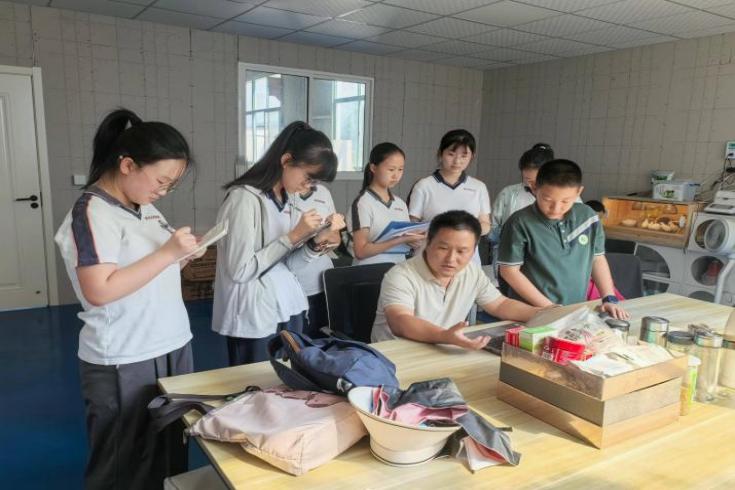
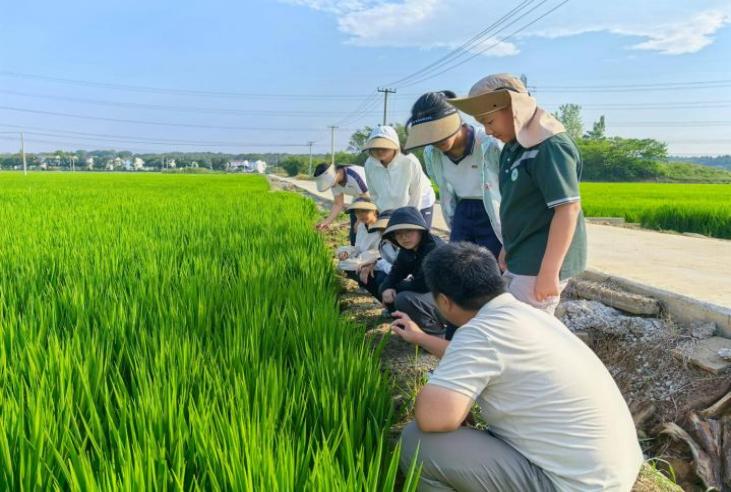
Currently, China's agricultural production faces the dual challenges ofboostinggrain yield per unit area and addressing insufficient soil fertility. The long-term, excessive use of chemical fertilizers is one of the primary causes of these problems. In the early stages of chemical fertilizer application, crop yields rose rapidly. However, as usage continued over time, the additional yield obtained from each extra kilogram of fertilizer gradually decreased, and in some cases even led to lower yields—a phenomenon known as the law of diminishing marginal returns. Prolonged overuse of chemical fertilizers has also caused severe agricultural non-point source pollution, leading to soil compaction and a decline in soil organic matter content. Furthermore, it contributes to water eutrophication, which promotes the excessive growth of certain organisms (e.g., algae) and leads to harmful algal blooms—creating a vicious cycle that severely undermines environmental benefits. Compounding these challenges, global warming and the growing frequency of extreme weather events have significantly affected agricultural production. For example, high temperatures have increased the pollination failure rate of rice, lowering grain quality, and reduced the protein content of wheat.
To address these threats to food security, the Communist Party of China (CPC) Central Committee has outlined the following strategies:
1. Strictly uphold the "red line" of 1.8 billion mu of arable land, ensure sufficient grain cultivation area, and safeguard national food security.
2. "Store grain in the land": Improve soil quality. This involves increasing soil organic matter, alleviating soil compaction, and restoring soil health and fertility.
3. "Store technology in the land": Advance agriculture through technological innovation. Leveraging technological empowerment, enhance the quality of agricultural inputs and upgrade agricultural technologies to better align with national food security strategies.
4. Reduce chemical fertilizer use: Cut down on the excessive application of fertilizers to mitigate agricultural non-point source pollution.
化肥的贡献和长期过量使用的危害【路子雯】
The Contributions of Chemical Fertilizers and Risks of Long-Term Excessive Use
化肥从根本上重塑了人类与粮食生产的关系,被广泛认为是20世纪改变世界的关键技术之一。破解粮食危机:在20世纪全球人口爆炸式增长的背景下,化肥突破了传统农业依赖天然肥力的局限,使单位面积土地产量大幅提升,直接避免了数十亿人的饥饿,这是其最核心的价值。它与种子、农药、农机等共同推动农业从“靠天吃饭”的粗放模式,转向可控的和高效的集约化生产,为人类提供了稳定的粮食保障。
不过,也需要客观看待其两面性:长期过量的化肥使用会带来土壤退化、水体富营养化、空气污染等一系列环境问题。
Chemical fertilizers have fundamentally reshaped the relationship between humanity and food production, and are widely recognized as one of the key technologies that transformed the world in the 20th century. Addressing the food crisis: Against the backdrop of explosive global population growth in the 20th century, chemical fertilizers overcame the limitations of traditional agriculture—which relied on natural soil fertility—dramatically boosting crop yields per unit area. This directly averted starvation for billions of people, representing their most fundamental value. Alongside high-quality seeds, pesticides, and agricultural machinery, chemical fertilizers have driven agriculture to transition from an extensive, "weather-dependent" model to a controlled, efficient, and intensive production system—securing stable food supplies for humanity.
However, it is equally important to objectively recognize their dual nature: long-term excessive application of chemical fertilizers gives rise to a range of environmental issues, including soil degradation, water eutrophication, and air pollution.
有机肥料的使用对农业生产的价值【沈钰清】
The Value of Organic Fertilizer Application in Agricultural Production
在农业生产中,有机肥料的应用具有显著价值。具体而言,有机肥料能够大幅改善土壤板结状况,并为作物提供长效的养分供应。此外,有机肥还能有效增强土壤肥力,促进微生物群落的繁殖。在试验种植中,当完全以有机肥替代化肥时,有机肥料的种植优越性得到了进一步验证。2024年的水稻实验数据显示:即使在多种极端天气的影响下,相较于化肥种植,有机肥料种植仍能保持更高的产量,并且土壤有机质含量得到同步提升。这不仅在种植过程中改善了土壤条件,保护了环境,还减少了化肥的使用量,为农民带来了更高的实际收益。
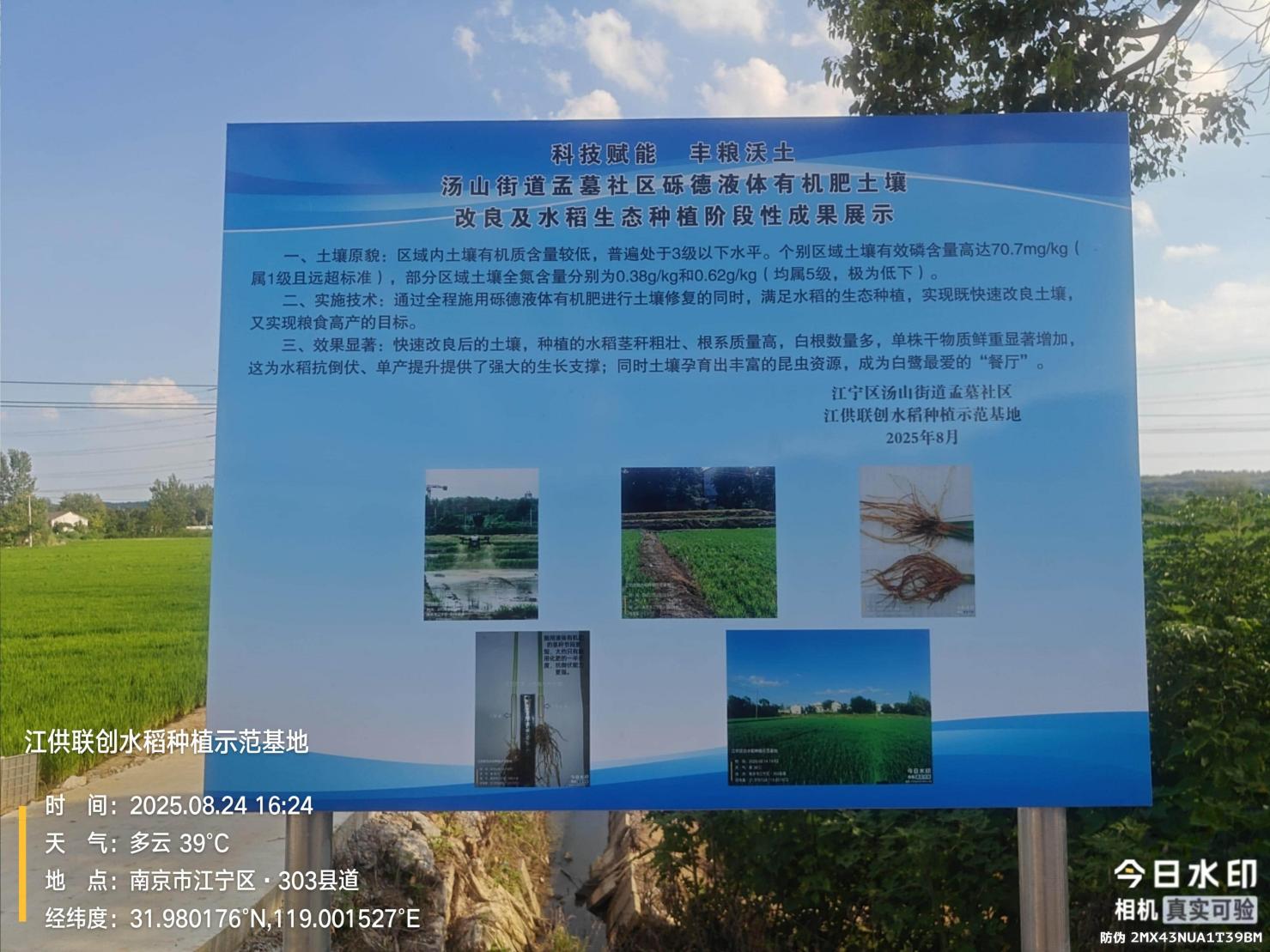
In agricultural production, the application of organic fertilizers offers substantial value. Specifically, organic fertilizers can effectively alleviate soil compaction and deliver a long-lasting supply of nutrients to crops. Furthermore, they effectively boost soil fertility and foster the growth of beneficial microbial communities in the soil. In experimental planting trials, the advantages of organic fertilizers were further confirmed when they fully replaced chemical fertilizers. Data from the 2024 rice trials showed that even amid various extreme weather events, rice grown with organic fertilizers achieved higher yields than that grown with chemical fertilizers—while also increasing soil organic matter content. This approach not only improves soil conditions and protects the environment during the cultivation process but also reduces chemical fertilizer use—ultimately bringing greater practical benefits to farmers.
砾德液体有机肥的创新价值【吴翊凡】
The Innovative Value of Lide Liquid Organic Fertilizer
我们了解到这种液体有机肥是将有机固体废弃物通过科技成果转化而成的一种资源化再利用肥料。有机固体废弃物被运至工厂物料仓后,会经历自动分拣,挑出无机物和不易快速处理的有机物(例如筷子等木质纤维含量高的有机物),然后进行打浆和二次分离。随后有机物浆液进入储罐进行水解,将其中大分子有机质转化为小分子形态,这时成品的味道已是一种淡淡的酱油气味。再经过随后的多次分离和研磨后,肥料就可以正式包装了。
我们还了解到它还有着很多优势:第一,它可以资源化利用有机固体废弃物,让它们重回食物链,比以往使用焚烧有机固体废弃物发电的利用方式更环保、更生态。第二,它可以提升土壤中的有机质含量,为土壤中微生物生存和繁殖提供优质的小分子养料,然后通过这些微生物的矿化作用转化为植物生长所需的营养物质。第三,在与化肥同施时可以提高化肥吸收利用率,促进化肥减量,减少污染、保护环境。另外,我们还了解到用它作为肥料种出的水稻对比化肥种植的水稻茎秆更粗壮、节间更短,茎秆壁厚约为化肥种植的1.5倍,这使得水稻抗倒伏能力更强。2024年09月台风“贝碧嘉”过境南京后,约两万亩的水稻发生了倒伏现象,而用这种液体有机肥种植的水稻却未受到任何影响。第四,用这种肥料种植的水稻根系更为粗壮,长度也更长,而且还会拥有更多的白根,说明了土壤环境的改善良好。最后,施用这种肥料的方法简单,只需随水冲施,节省施肥过程中人和机械的费用,不仅提高了效率,也降低了费用,也提高了农民的收益。
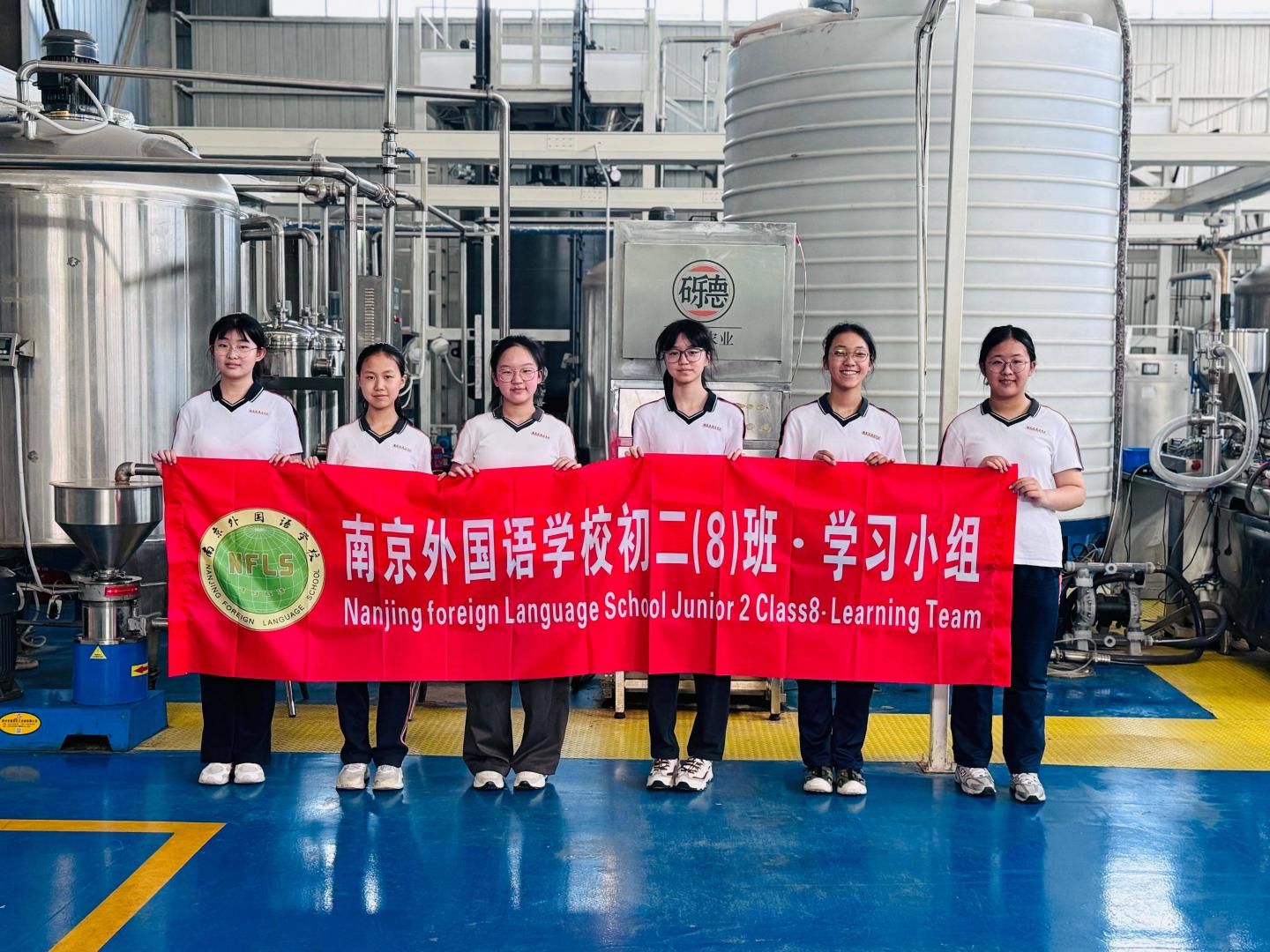
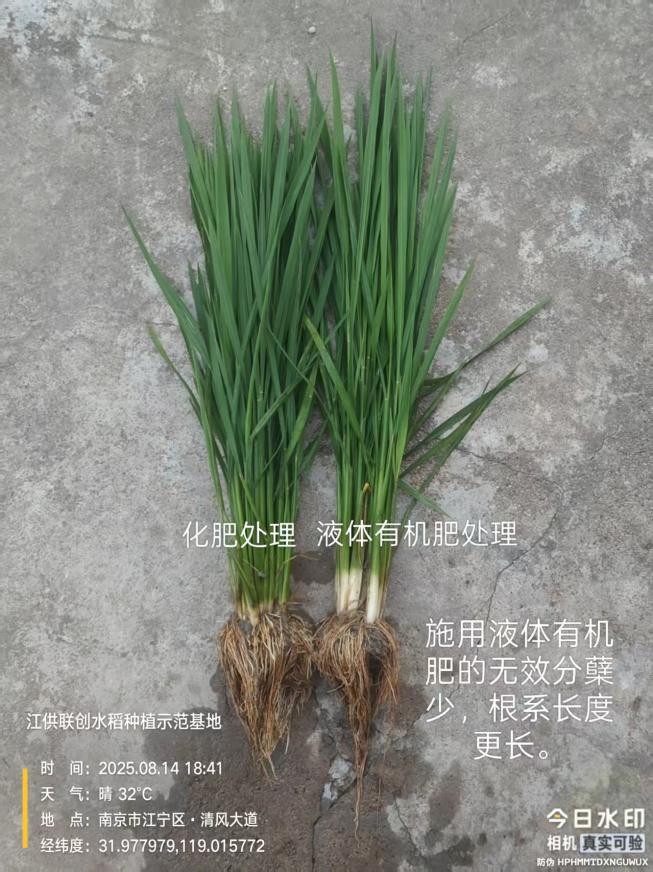
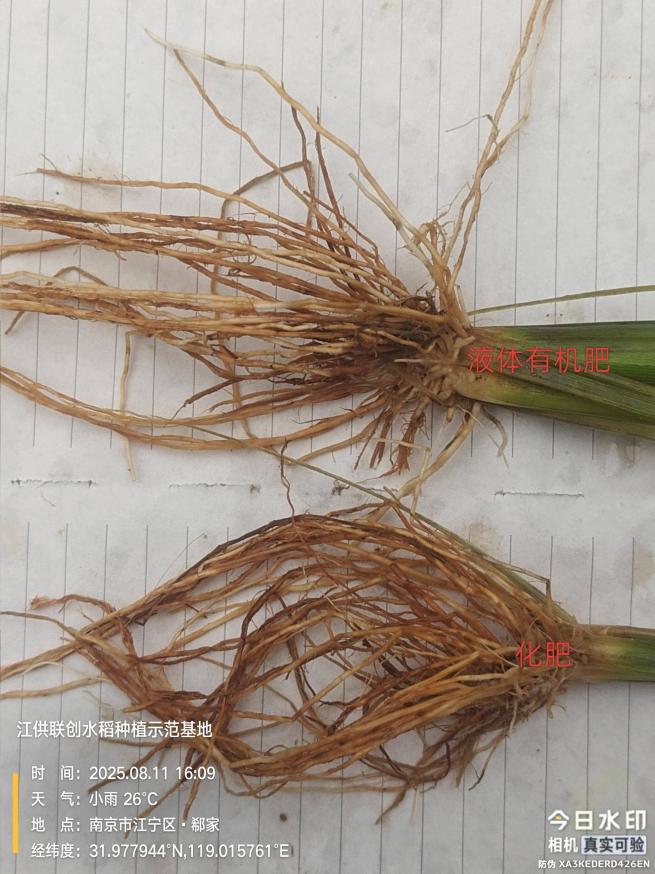
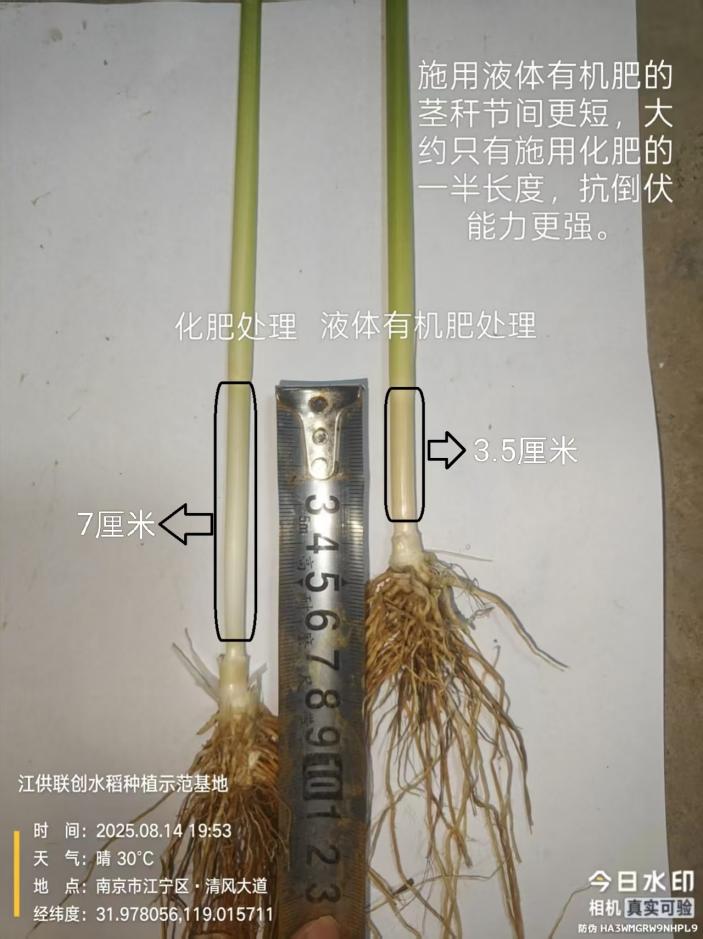
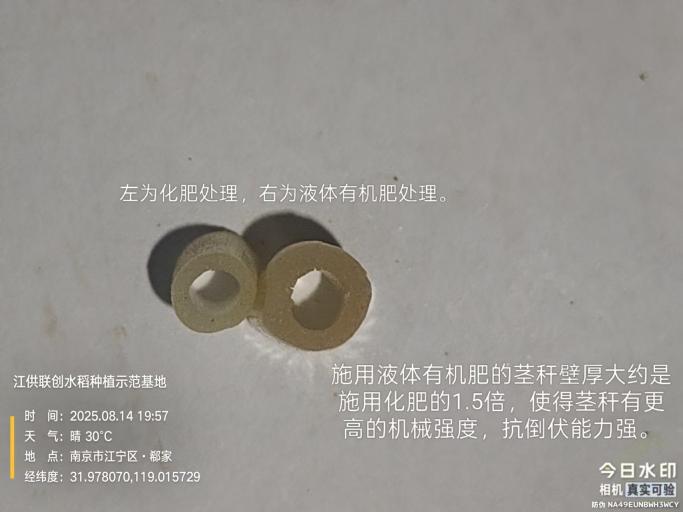
We have learned that this liquid organic fertilizer is produced by converting organic solid waste into a resource through the application of scientific and technological innovations. Once the organic solid waste is transported to the factory’s material warehouse, it undergoes automatic sorting to remove inorganic substances and organic materials that are not easily processed quickly (e.g., chopsticks and other items with high lignocellulose content). The remaining organic matter is then pulped and subjected to secondary separation. Subsequently, the organic slurry is transferred to a storage tank for hydrolysis, which breaks down large-molecule organic substances into small-molecule forms—at this stage, the final product emits a faint soy sauce-like aroma. After undergoing multiple subsequent separation and grinding processes, the fertilizer is ready for formal packaging.
We also learned that it offers numerous advantages: First, it enables the resource-based recycling of organic solid waste, allowing such waste to re-enter the food chain. This approach is more environmentally friendly and ecologically sustainable than the traditional method of incinerating organic solid waste to generate electricity. Second, it boosts the organic matter content in soil, supplying high-quality small-molecule nutrients for the survival and reproduction of soil microorganisms. These nutrients are then converted into substances required for plant growth through the mineralization of these microorganisms. Third, when co-applied with chemical fertilizers, it improves the absorption and utilization rate of chemical fertilizers—thereby reducing the amount of chemical fertilizers needed, mitigating pollution, and protecting the environment. Additionally, we learned that rice grown with this liquid organic fertilizer has thicker, sturdier stems, shorter internodes, and a stem wall thickness approximately 1.5 times that of rice grown with chemical fertilizers—greatly enhancing its lodging resistance. When Typhoon Bebinca hit Nanjing in September 2024, around 20,000 mu of rice in the region experienced lodging; however, rice grown with this liquid organic fertilizer remained completely unaffected. Fourth, rice grown with this fertilizer develops thicker, longer root systems and a greater number of white roots—an indicator that the soil environment has been significantly improved. Finally, this fertilizer is easy to apply: it only needs to be applied via fertigation (applying fertilizer with irrigation water), which saves labor and machinery costs associated with fertilization. This not only boosts efficiency and cuts costs but also increases farmers’ actual income.
在基地参与我们进行的农业学习 【朱紫涵】
Our Agricultural Learning Experience at the Base
经过在工厂的参观和技术老师的授课,我们走进田间,老师带领我们来到水稻田,认识水稻的生长节点和介绍管理要点:【引用老师的话】
“破壳”时刻:一场生命的奇迹:当水稻进入破口期,就像一个新生命即将诞生。稻穗从包裹它的绿色外衣中悄悄探出头,仿佛好奇地打量着外面的世界。这层外衣被称为叶鞘,而破口的过程意味着水稻即将迎来关键的成长阶段——抽穗、开花、授粉。
破口后的华丽蜕变:破口后,水稻的颖壳(绿色的颗粒状结构)逐渐展开,露出里面的颖花。这时,水稻进入抽穗期,稻穗迅速伸长,颖花开始绽放。每朵小花只有短短几小时的花期,必须抓紧时间完成授粉。水稻通常是自花授粉的植物,雄蕊的花粉会自然落在雌蕊的柱头上,形成未来的稻谷。
种植的关键管理期:破口期是水稻生长的关键阶段,农民需要密切关注水分、养分和病虫害。此时,水稻对水分敏感,既要保持田间湿润,又不能积水过多。同时,适量补充钾肥能增强抗倒伏能力,而防治穗颈瘟等病害也至关重要,否则可能影响授粉和产量。
从开花到丰收的希望:授粉成功后,颖花逐渐闭合,子房开始膨大,形成我们熟悉的稻谷。大约一个月后,稻穗由青转黄,沉甸甸地低垂,宣告着丰收的到来。破口期虽短暂,却是水稻一生中最浪漫而紧张的时刻——短短几天内,它完成了生命的绽放与延续,最终化为我们碗中的粒粒米饭。【小知识:一株水稻约有200-300朵颖花,但并非全部能结实。良好的管理能提高“结实率”,让更多稻穗颗粒饱满!】
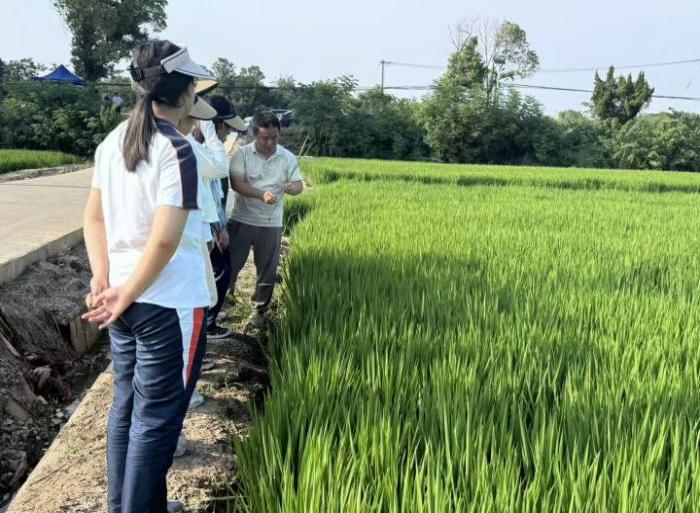
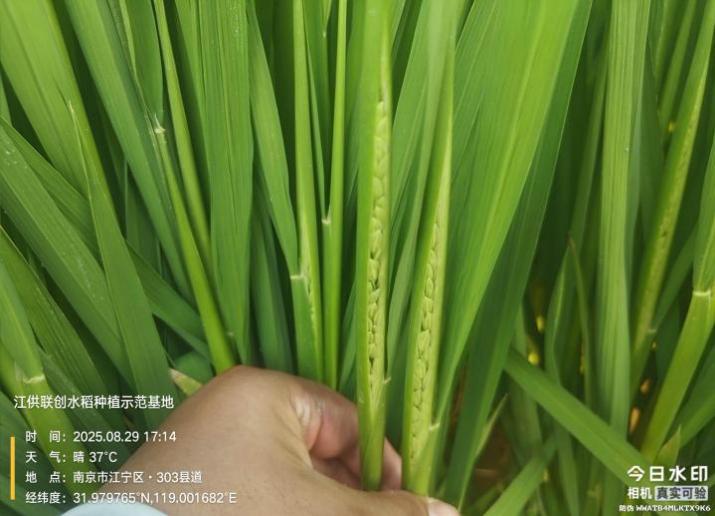

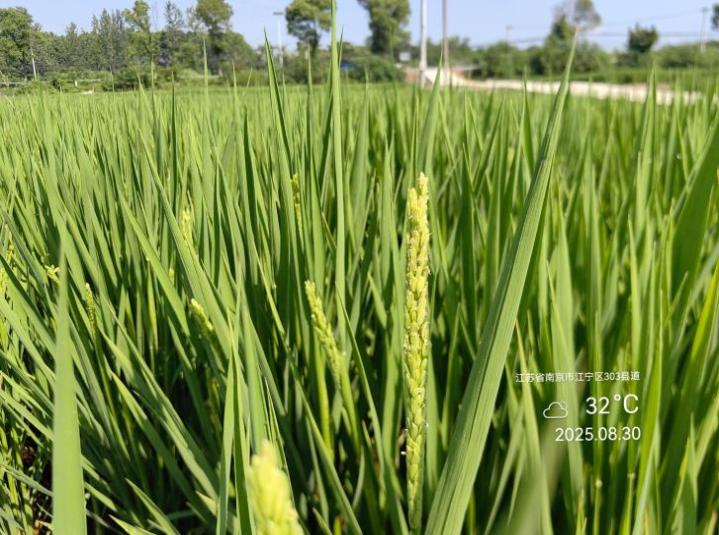
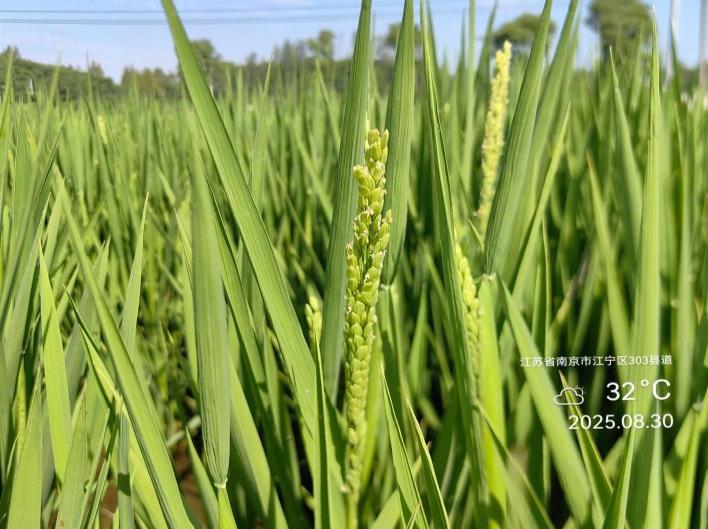
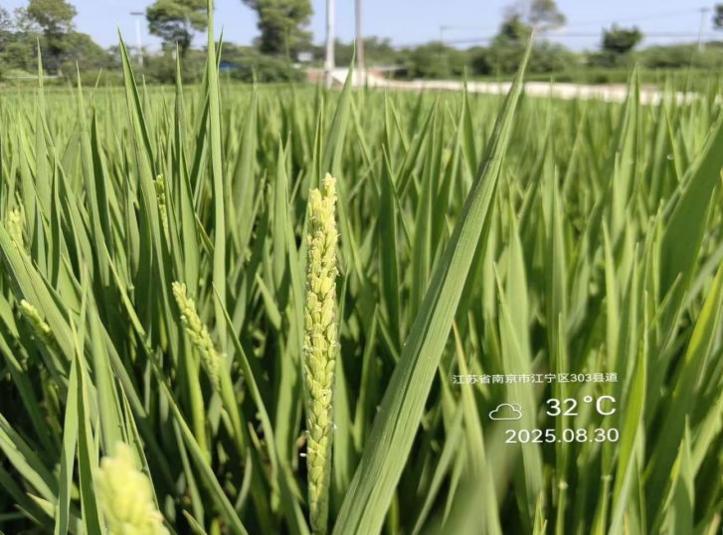
随后我们又到基地的生态种植蔬菜的田块,一位经验丰富的技术人员搬来一盘已经完成育秧的白菜苗,并为我们讲解移摘白菜苗的要领,挖坑的深度、栽种时的力度都需格外注意,我们都跃跃欲试的戴上专业的工作手套、拿起工具亲自尝试。
虽然过程中,作为初学者的我们尚有些不熟练,但经过技术人员在旁指导,我们都顺利地完成了移栽工作,并在自己种植的白菜旁制作了铭牌,期待秋后的收获。
接着我们观看了技术人员使用微喷带给玉米地自动施肥的场景。将有机肥倒入500公斤的大桶后进行稀释,接上软管后通过加压一排排微喷带开始施肥,肥液均匀地渗入每棵苗的根部,几分钟整桶肥料便已施完。整个过程高效有序,展现了专业而先进的施肥方法。
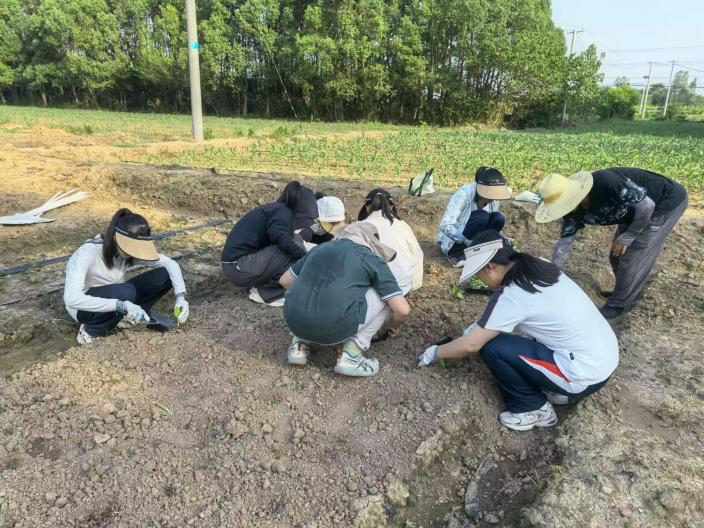
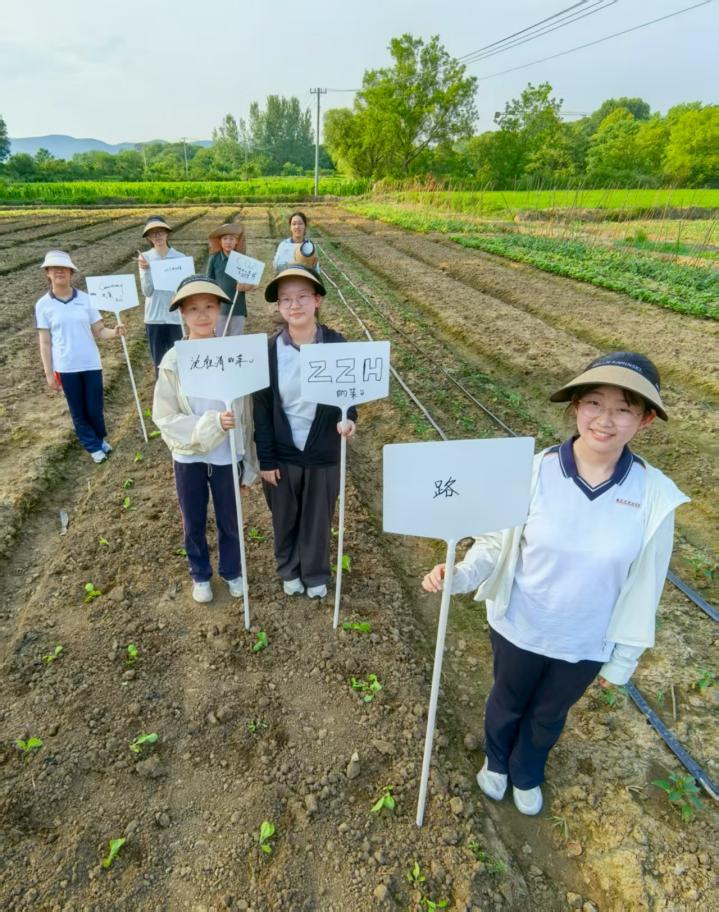
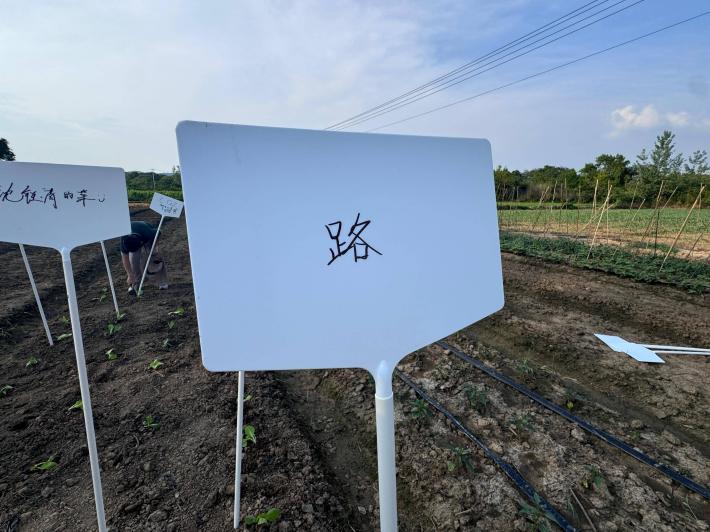
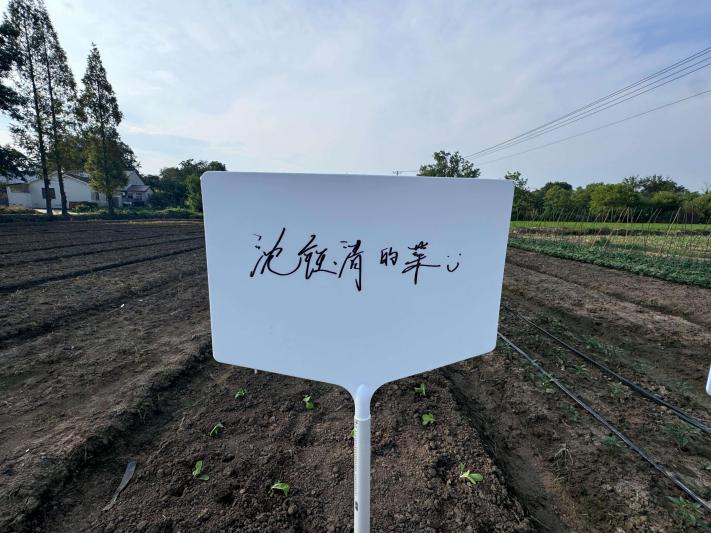
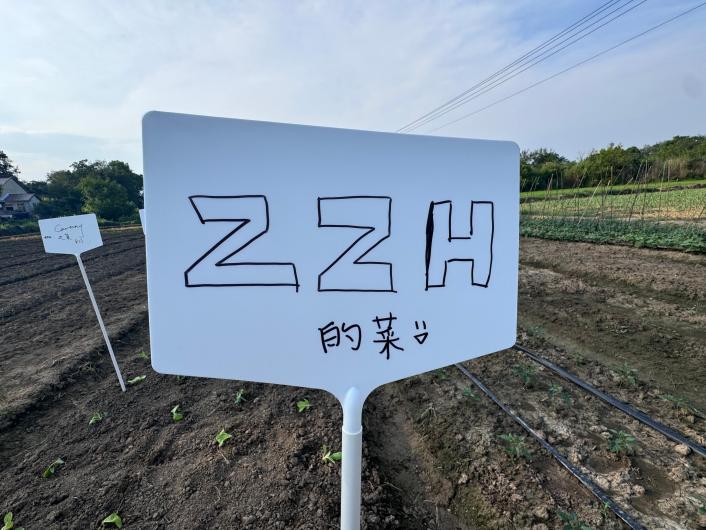
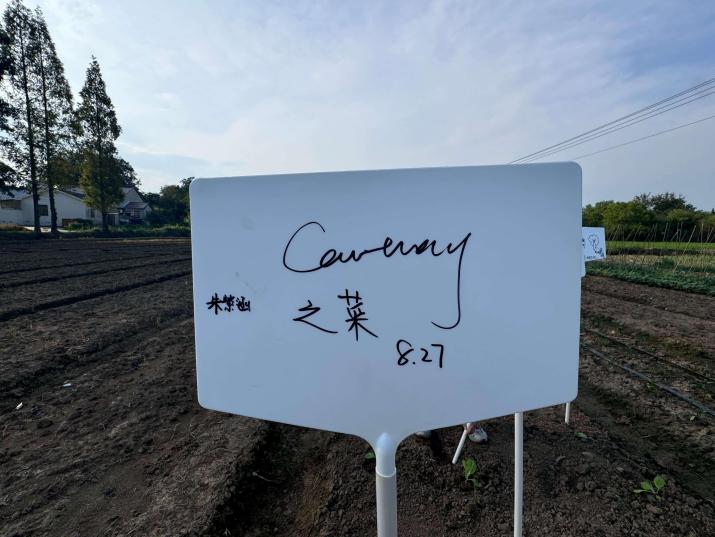


Following the factory tour and a lecture by the technical instructor, we headed out to the fields. The instructor took us to the rice paddies, where we learned to identify rice’s growth stages and were briefed on key management practices. Here’s what the instructor shared:
The "Husk-Breaking" Moment: A Miracle of Life
When rice enters the booting stage (the "husk-breaking" phase), it is like a new life on the verge of being born. The rice panicle gently peeks out from its green covering, as if curiously gazing at the world outside. This outer covering is known as the leaf sheath, and the husk-breaking process marks the start of rice’s critical growth stages: heading, flowering, and pollination.
The Splendid Transformation After Husk-Breaking
After husk-breaking, the rice’s glumes (small green, grain-like structures) slowly unfold, revealing the tiny florets inside. At this point, the rice enters the heading stage: the panicle grows rapidly in length, and the florets start to bloom. Each floret only has a lifespan of a few hours to complete pollination. Rice is usually a self-pollinating crop: the pollen from the stamens naturally falls onto the stigma of the pistil, laying the foundation for the formation of future rice grains.
The Critical Management Phase for Cultivation
The husk-breaking stage is a pivotal phase in rice growth. Farmers must closely monitor three key aspects: water, nutrients, and pest/disease control. During this period, rice is extremely sensitive to water: the field needs to stay moist, but must not be waterlogged. Furthermore, applying supplementary potassium fertilizer can strengthen the rice’s lodging resistance. Equally important is preventing diseases like panicle blast—if left unchecked, such diseases can disrupt pollination and reduce yields.
From Flowering to the Promise of Harvest
After successful pollination, the florets slowly close, and the ovary starts to swell—gradually developing into the rice grains we know. Approximately one month later, the panicles turn from green to golden yellow and hang heavily down—heralding the upcoming harvest. Though short-lived, the husk-breaking stage is both the most romantic and tense moment in a rice plant’s life. In just a few days, it completes its blooming and ensures the continuation of its life cycle, ultimately becoming the grains of rice we eat.
Did you know? A single rice plant has roughly 200–300 florets, but not all of them will develop into grains. Proper management can increase the "grain-setting rate," resulting in more plump, well-filled panicles!
Later, we went to the base’s ecological vegetable plots, where an experienced technician brought over a tray of healthy, nurtured cabbage seedlings. He walked us through the key steps for transplanting cabbage seedlings, stressing that we needed to pay special attention to two things: the depth of the holes we dug and how firmly we packed the soil around the seedlings. Eager to get hands-on, we put on professional work gloves, grabbed our tools, and started transplanting.
While we were still a bit unskilled as beginners, with the technician’s on-site guidance, we all successfully finished transplanting the seedlings. We also made nameplates next to the cabbages we’d planted and eagerly looked forward to the autumn harvest.
Next, we watched the technicians use micro-sprinkler tapes to fertilize the cornfield automatically. First, they poured organic fertilizer into a large 500-kilogram barrel and diluted it with water. Then, they connected a hose to the barrel; after pressurizing the system, rows of micro-sprinkler tapes started applying fertilizer, allowing the nutrient solution to seep evenly into the roots of each corn seedling. The entire barrel of fertilizer was used up in just a few minutes. The whole process was efficient and well-organized, showcasing a professional, advanced fertilization technique.
新技术在农业生产中的应用【赵紫涵】
随着科技的发展,在农业生产上也有了各种应用:
With the advancement of technology, a range of technological applications have been adopted in agricultural production:
育秧中心:其中暗化出苗技术可以使发出的苗更加整齐,方便后续田间的种植管理。
Seedling Raising Centers: The dark germination technique ensures more uniform seedling emergence, facilitating easier subsequent field planting and management.
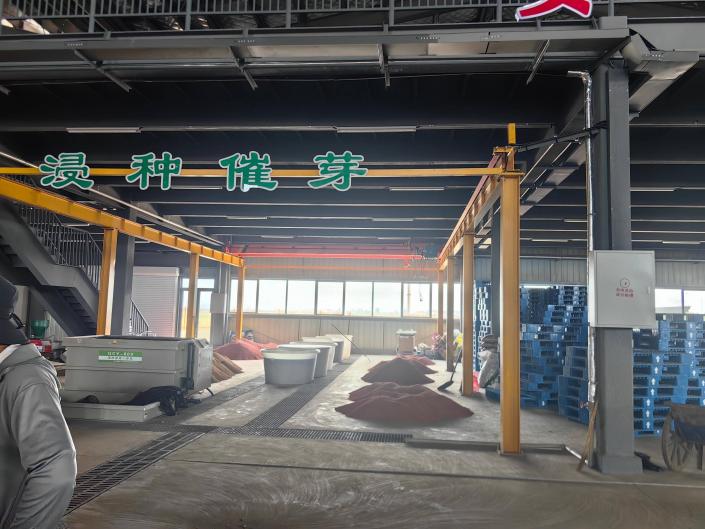
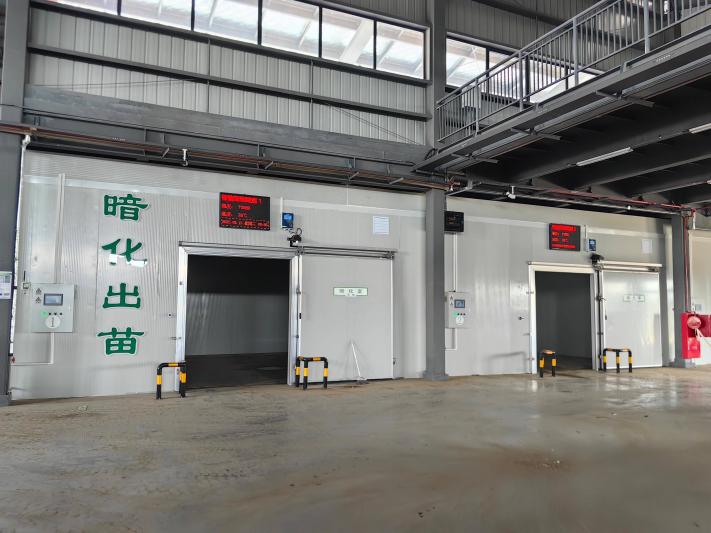
插秧机:节省人力,还能均衡插秧行株距和秧苗深度,提升插秧效率和效果。
Rice Transplanters: These machines not only save labor but also ensure consistent row and plant spacing as well as uniform seedling depth, enhancing both transplanting efficiency and effectiveness.
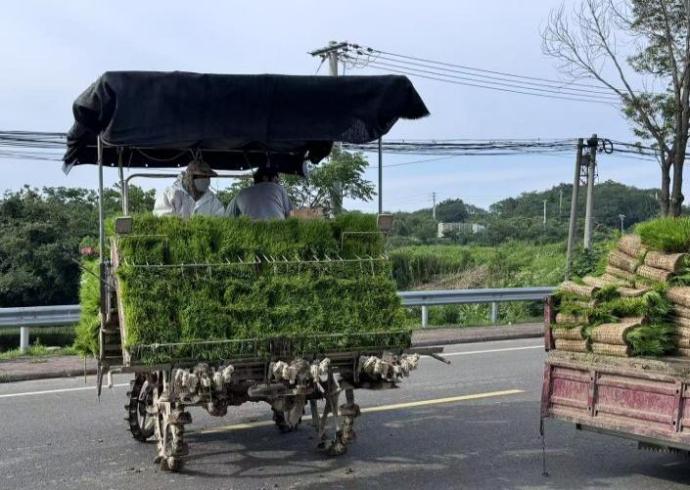
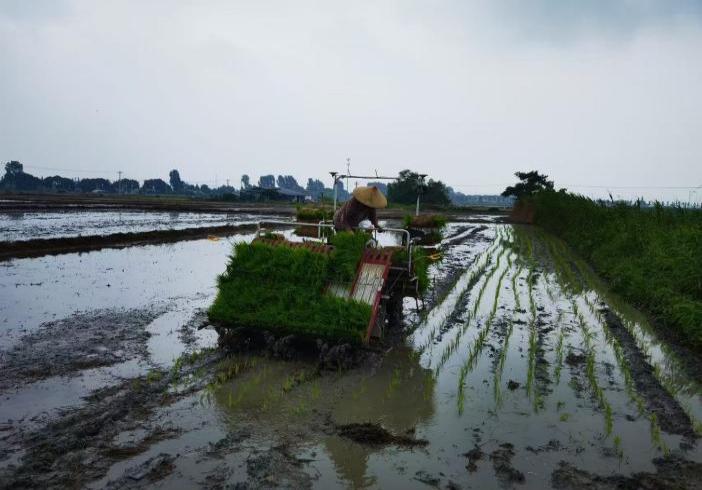
无人机遥感监测:通过热成像,精确对比施肥前后的水稻长势,监测生长过程的营养供给。
Drone Remote Sensing Monitoring: Equipped with thermal imaging technology, drones accurately compare rice growth conditions before and after fertilization, and monitor nutrient supply throughout the growth cycle.
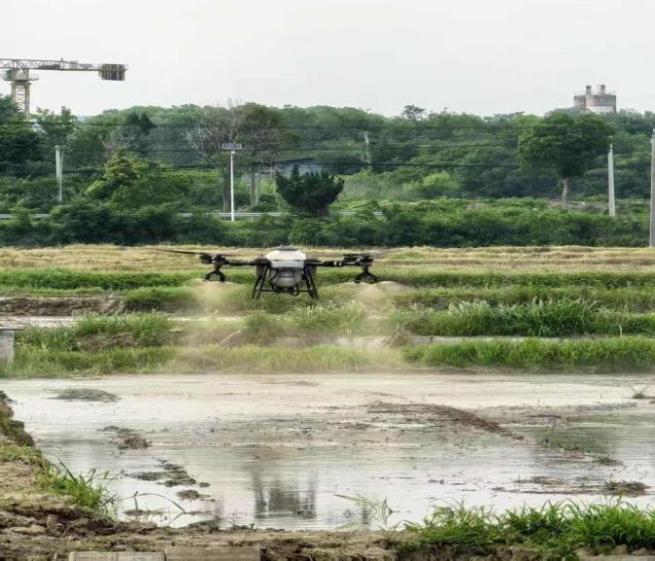
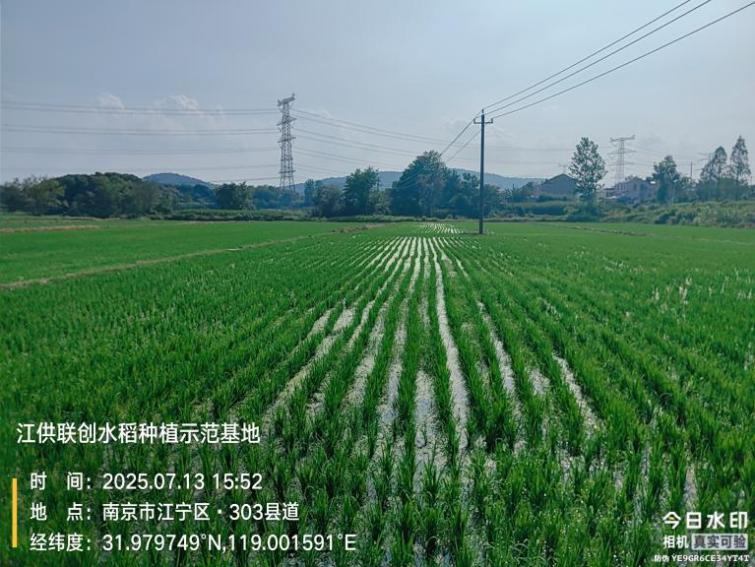
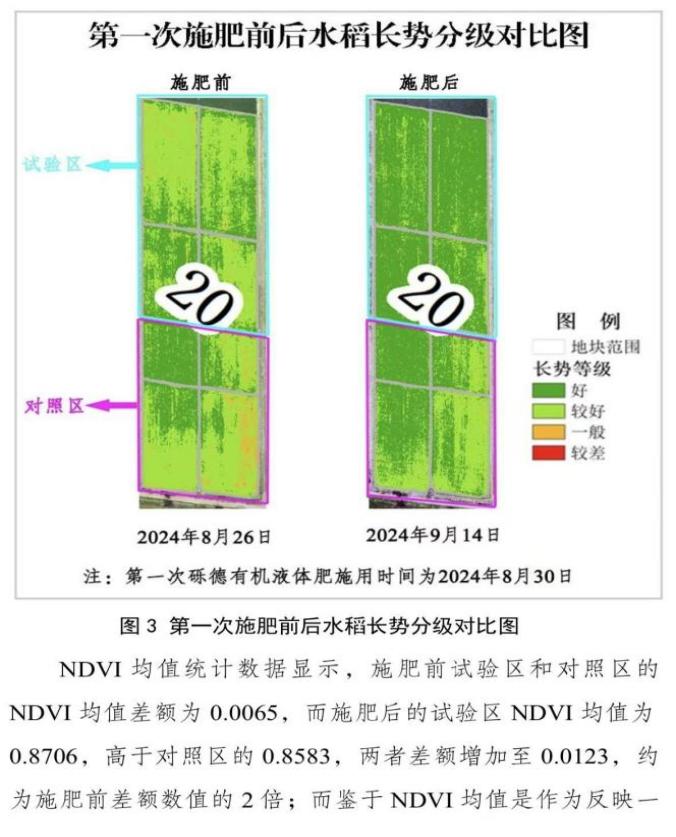
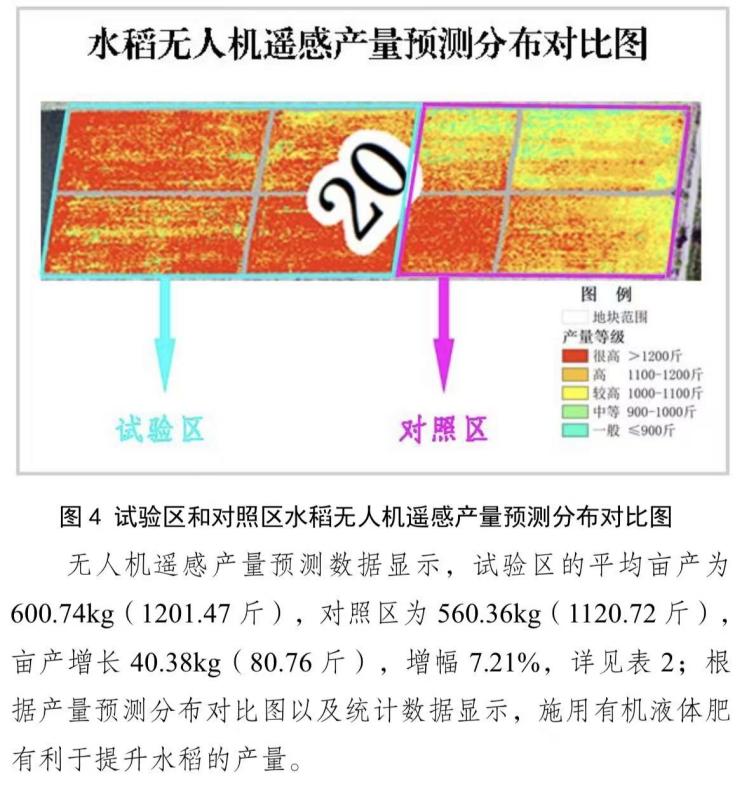
水肥一体化应用:可以高效和精准管理水和肥料的应用。
Integrated Water and Fertilizer Application Systems: These systems enable efficient and precise management of water and fertilizer application.
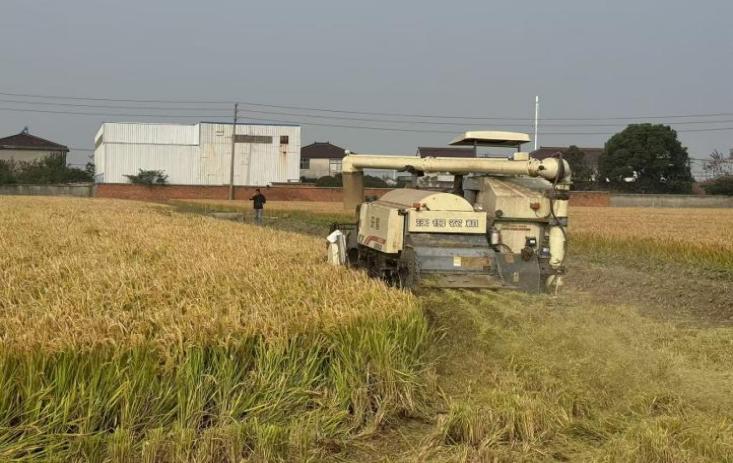
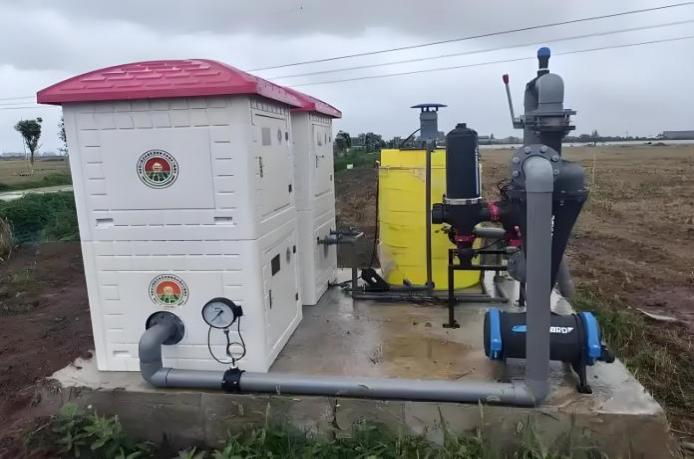
机械化收割一体机:能做到让每一粒粮食颗粒归仓。
Mechanized Combined Harvesters: These machines ensure that nearly every grain is collected and stored, achieving the goal of "gathering every grain into the granary."
从这些介绍中,我们体会到了科技的迅速发展,必能让农业发展也如虎添翼,彻底做到“饭碗端在中国人自己手里”的目标!
From these introductions, we recognize that the rapid advancement of technology will significantly enhance agricultural development—providing a strong impetus to fully achieve the goal of “keeping the Chinese people’s rice bowls firmly in their own hands.”
结尾【赵紫涵】
今年我们的暑假实践活动是对去年暑假调查研究的延续,再次实地探访了砾德农业液体有机肥工厂,更加深入地了解生产过程。同时指导老师也给我们讲解了有机固体废弃物资源化利用后对农业生产的价值(二)课件,认识了这种肥料在水稻种植上的应用和效果。通过老师认真的讲解,我们了解到肥沃的土壤才是粮食生产的重要基础,需要对低品质的土壤不断进行改良,才能真正做到“藏粮于地”。
我们还对新技术在农业生产中的运用进行了了解,插秧机、水肥一体化系统、无人机、一体化收割机等科技手段的应用能大大降低种植成本和人力成本,提高农业生产效率,真正达成“藏技于地”。
除了在工厂内的学习,我们还下到农田亲身实践了一番。每个人都种下了属于自己的白菜苗,等到丰收季节我们便能品尝到自己动手种下的美味。
今年的暑假实践活动让我们意识到,在不远的将来,在高新技术和优质土壤的助力下,农业将不只是农民谋生的基础,而将成为一份人人想要参与的事业。我们也认识到,只有改良土壤,才能使现代农业跨过瓶颈,迈上新的高峰。只有改良土壤,才能从根源解决如今农业所面对的问题,真正做到“饭碗端在中国人自己手里”,真正守住粮食安全的防线!
This year’s summer practical activity was a continuation of our research from last summer. We paid another on-site visit to the Lide Agricultural Liquid Organic Fertilizer Factory, gaining an even deeper understanding of its production process. Our supervising teacher also gave us a lecture on the "Value of Resource Utilization of Organic Solid Waste in Agricultural Production (Part 2)" courseware, through which we gained an understanding of this fertilizer’s application and effectiveness in rice farming. Thanks to the teacher’s thorough explanation, we came to realize that fertile soil is a crucial foundation for grain production. Only through the continuous improvement of low-quality soil can we truly achieve the goal of “storing grain in the land”.
We also learned about the application of new technologies in agricultural production. The adoption of technological tools—including rice transplanters, integrated water and fertilizer application systems, drones, and mechanized combined harvesters—can significantly lower planting and labor costs, boost agricultural production efficiency, and truly fulfill the concept of “storing technology in the land”.
Beyond learning at the factory, we also went out to the farmland to gain hands-on practical experience. Each of us planted our own cabbage seedlings, and when the harvest season arrives, we will be able to savor the delicious produce we grew with our own hands.
This year’s summer practical activity made us realize that in the near future, with the support of advanced technologies and high-quality soil, agriculture will no longer be merely a means of livelihood for farmers—it will also become a career that everyone aspires to join. We also came to understand that only through soil improvement can modern agriculture break through its bottlenecks and reach new heights. Moreover, only through soil improvement can we address the root causes of the problems confronting agriculture today—truly realizing the goal of “keeping the Chinese people’s rice bowls firmly in their own hands” and effectively safeguarding the nation’s food security.
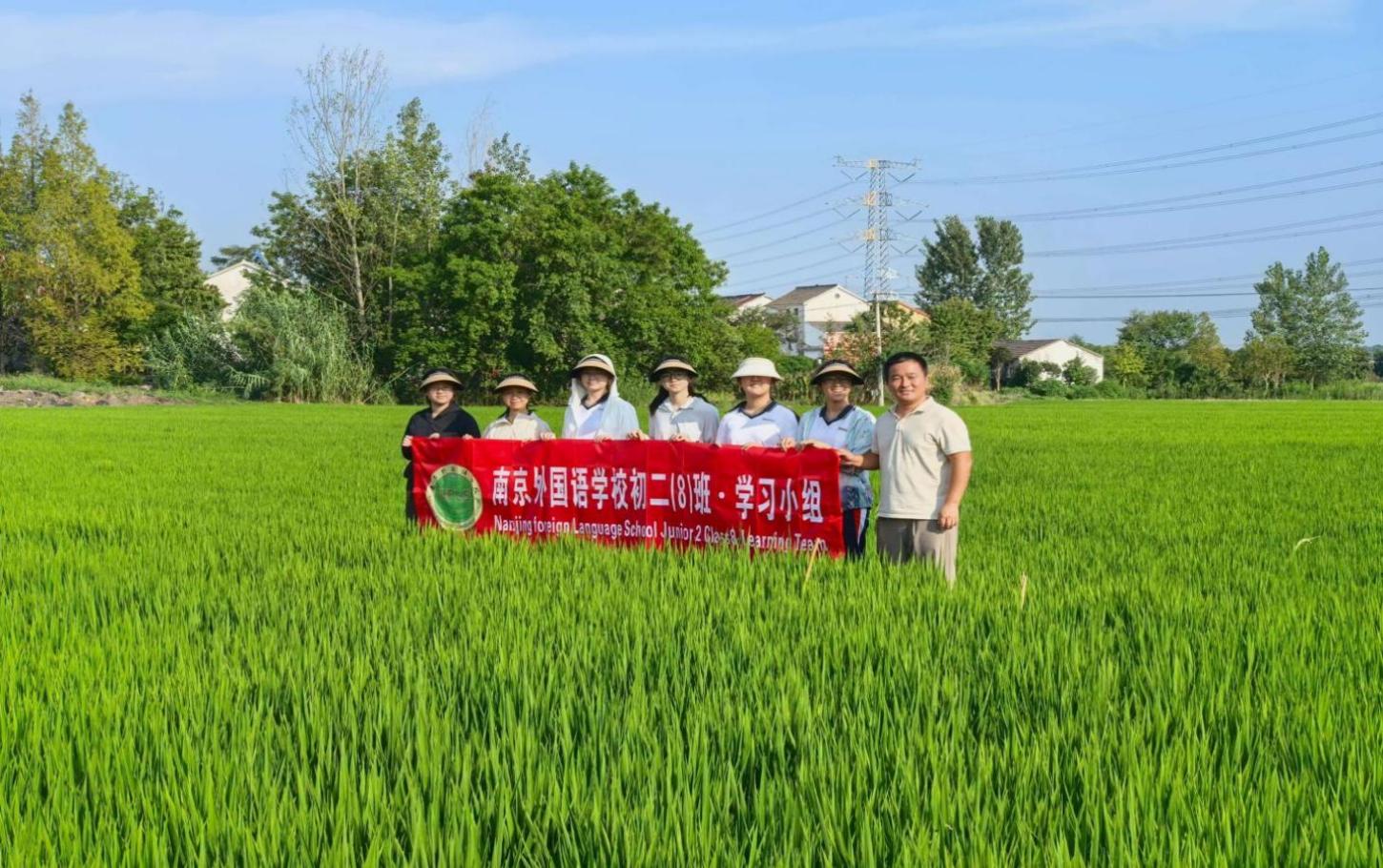
特别鸣谢支持单位:
Special Thanks to Supporting Units:
南京市江宁区农业农村局
Bureau of Agriculture and Rural Affairs of Jiangning District, Nanjing
南京市江宁区供销合作总社
General Supply and Marketing Cooperative of Jiangning District, Nanjing
南京市江宁区汤山街道孟墓社区
Mengmu Community, Tangshan Sub-district, Jiangning District, Nanjing
砾德农业科技发展(南京)有限公司
Lead Agricultural Technology Development (Nanjing) Co., Ltd.
南京麦禾思农业科技研究院有限公司
Nanjing MaX Agricultural Science and Technology Research Institute Co.,Ltd.
南京江供联创农业发展有限公司
Nanjing Jianggong Lianchuang Agricultural Development Co., Ltd.
